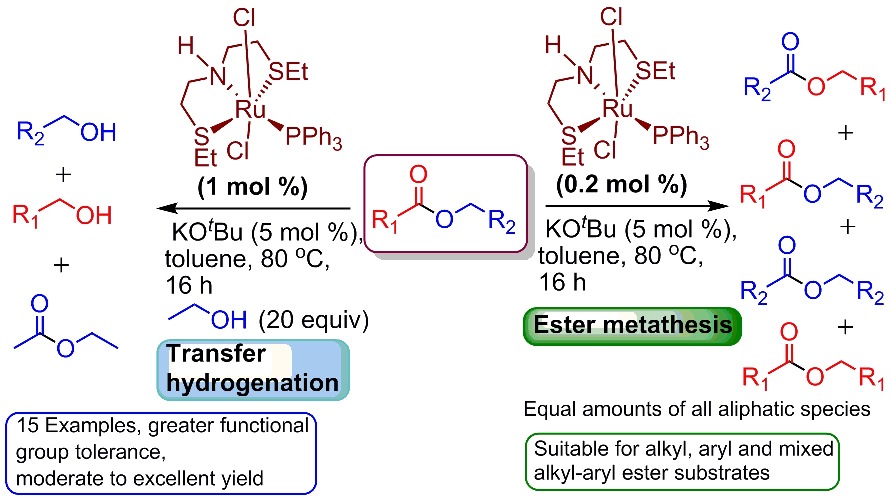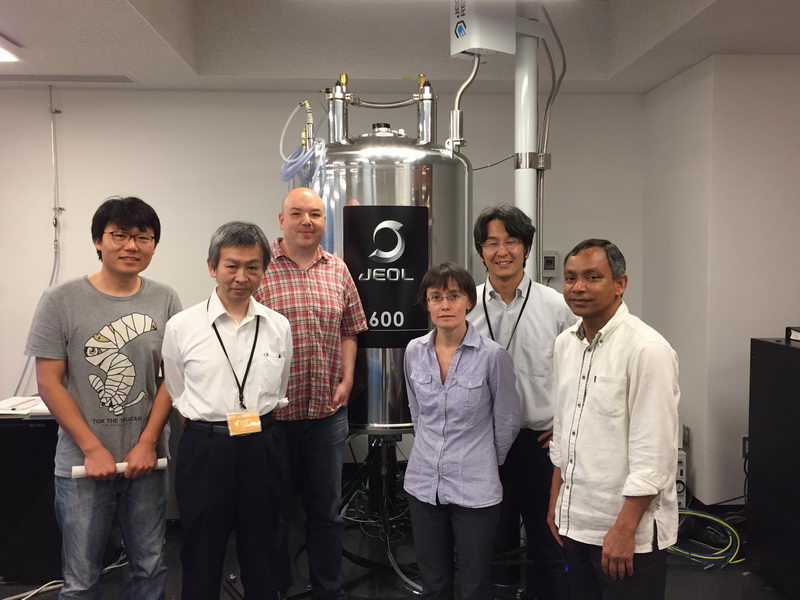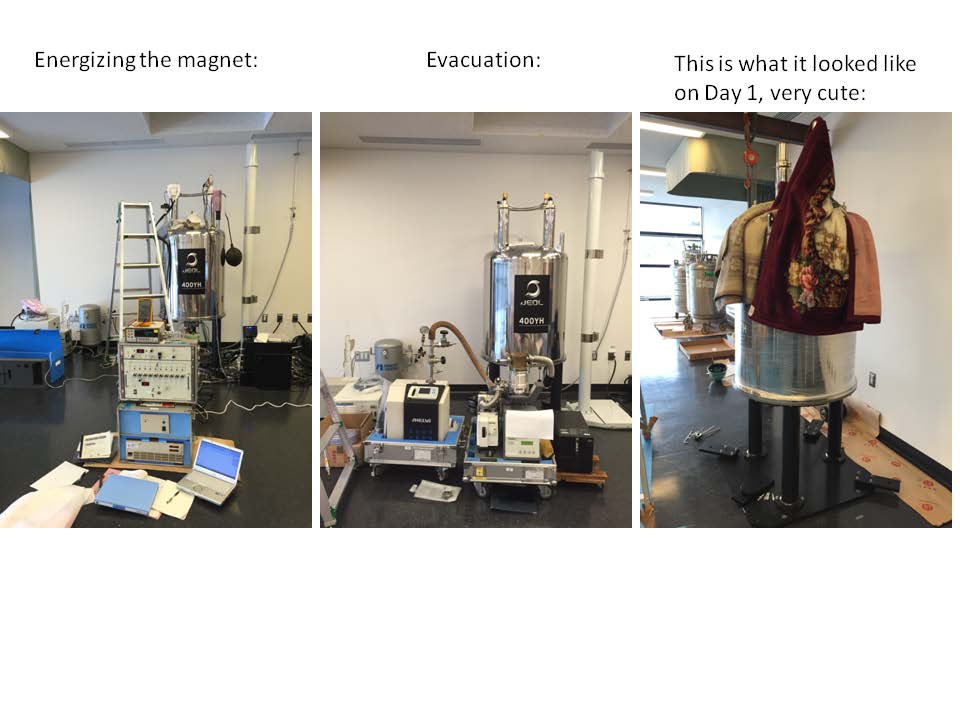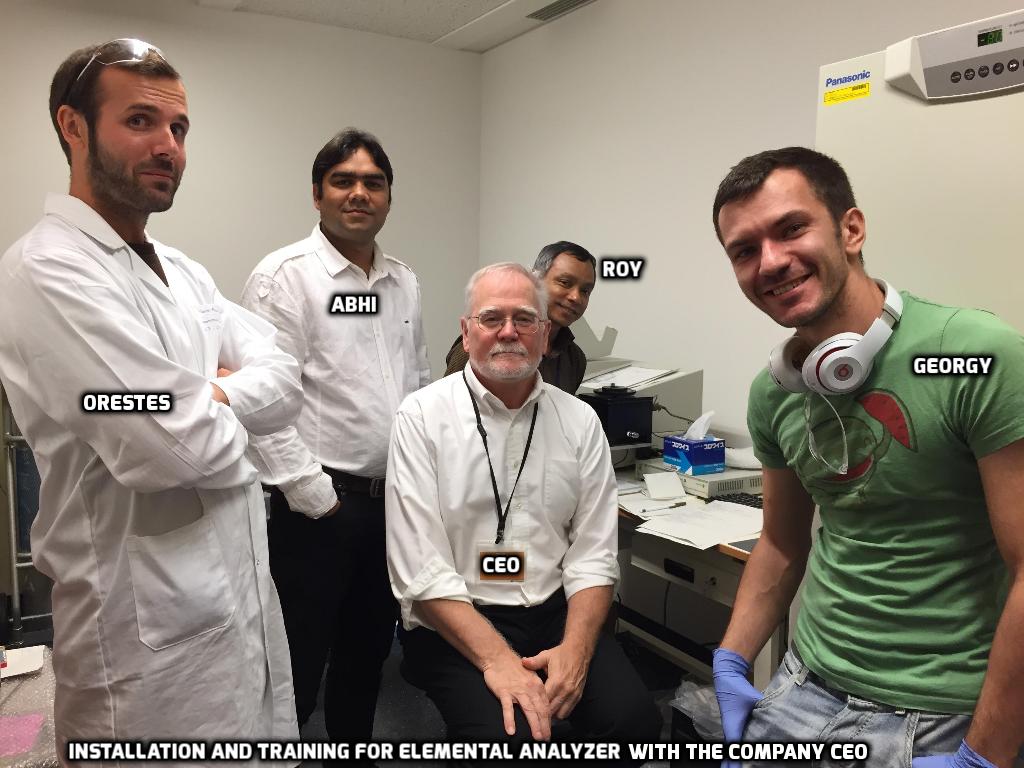Posts
Three more papers this year!
Three more papers came out this year: from Sebastien, Abir and Yu-Tao, and Ayumu. Congratulations to all CCCU members! Our work was also featured on the front cover of Organometallics!
Our paper is featured on the cover of ChemCatChem!
See Cover Feature of ChemCatChem for the Special Issue: Women of Catalysis
Here is the full graphics (thanks to skeppuccino!):

Course highlights: "Inorganic Electrochemistry: Fundamentals and Applications in Renewable Energy Catalysis"
Now that the class is almost finished (except for the final exam tomorrow), I'll introduce the highlights of my course "Inorganic Electrochemistry: Fundamentals and Applications in Renewable Energy Catalysis". This is a graduate level course for chemistry students that includes both lectures and laboratory experiments. In the class, we introduced basic principles of electrochemistry, and discusses modern research in the application of transition metal complexes in electrocatalysis for renewable energy storage and production.
DLA, Electroplating and oscillating reaction lab
Finally, we had our last laboratory experiment in “Inorganic Electrochemistry” class, during which we collected some entertaining experiments for the end of the year: oscillating reactions, electroplating, and diffusion-limited aggregation. Read more...

電気化学発光と化学発光
With some delay, updates from the last labs in “Inorganic Electrochemistry” class that I teach this semester. In the lecture, we covered briefly electrochemiluminescence and chemiluminescence, so in the following lab, we tried to see both, ECL by following experiments from Bard’s papers, and for chemiluminescence, just playing with luminol and different catalysts. Almost entire lab was done in the dark.
回路で見る“ウェット”な電気化学と“ドライ”な電気化学
We just had our first laboratory in the advanced electrochemistry course that I teach this semester, and before starting “wet” electrochemistry in solution, I wanted to do a quick demonstration of the basic electrochemistry experiments using a so-called “equivalent circuit” (“equivalent cell”). I find that it is a nice way to show some of the concepts (and for us, it is also useful to troubleshoot any technical problems with the potentiostat).
錯体化学・触媒ユニットのインターン学生達
Welcome to Sandra, our new research intern in the group!
And good luck to our interns who just finished their internship programs, Luca Nencini and Shubham Deolka!
ハサキン博士とデュベイ博士による初の論文
Congratulations to Eugene and Abhi who published their first OIST paper in ACS Catalysis about ester metathesis!

音の正体を探る
ゴールデンウィーク posting continues. As promised a few months ago, I’m going to talk about some artefacts I’ve found while using an ESR electrolysis cell. This has no practical meaning at all and is meant only as a futile intellectual exercise into what kind of noises you can encounter while doing electrochemistry. Read more...

ソリッドステート NMR
Although solid NMR training at OIST finished a couple of weeks ago, I did not have time to write a summary until now. From left to right, training participants and organizers are: Yunhui (Zhang group), Dr. Jun Ashida (JEOL), Eugene Khaskin (OIST), JEOL 600 MHz NMR, Julia, Dr. Koji Yazawa (JEOL), and Michael Roy (OIST).

See below the report on basic solid NMR training.
600 MHz NMR 設置完了
Installation of the common use 600 MHz NMR was finished, thanks to Nagashima-san, who came to Okinawa for the second time after installing the 400 MHz a few months ago. The new instrument can do both solid and liquid NMR and it only takes a few minutes to exchange probes. With a liquid samples probe, it's also possible to measure down to -40C without liquid nitrogen and up to +150C (with air stream cooling to protect against overheating). Long-time variable temperature experiments are thus possible.
「赤い線を切る!」
There is sometimes a question when people start doing CV measurements about cable connections: which cable to connect to which electrode? So we have a green one, a red one, and a white one. To give a final reference point for CV experiments and solve this question once and for all, let’s have a look again at the correct way of connecting cables to the electrodes in the three-electrode cell for CV experiments. And I’ll also show what happens if you do it in the wrong way.
新しい機器が届きました
...weighs 2.3 tonnes.
This is equivalent to an average weight of an adult rhinoceros or a humpback whale.
ラボ・セットアップ: 写真で見る2015年6月から2016年1月までの変遷
Just to document some changes, this is how the lab looks now, and how it was back in June 2015 when we just started. There are definitely some changes that happened over the last half a year, although the process is still in progress.
Thanks to everyone in our unit (Orestes, Eugene, Georgy, Abhi and Chika) and in OIST Facilities Section (Takada-san, Sakurai-san, John Dickison) and to OIST start-up budget for helping set up a working synthetic organometallic lab in a reasonable period of time, and Happy New year!
Synthetic Lab C704 in January 2016:

Same lab in June 2015 when we just started:
JEOL 400 MHz NMR application training
Our first applications training at OIST for JEOL 400 MHz was recently finished.
From left to right: Eguchi-san (JEOL), Pavlos-san (JEOL), Roy, Julia and Eugene (OIST).

Thanks to Pavlos-san, we covered a lot of topics over the past two and a half days of intense training, including: basic 1D experiments, array experiments, basic 2D experiments including data collection and processing in Delta (COSY, NOESY), 1H-15N HMBC, 1D NOE, DOSY, extremely nice No-D experiment (proton in non-deuterated solvents with solvent suppression, eventually it worked perfectly well for our toluene and THF samples), t1 measurements, 90 deg pulse calibration, high temperature kinetics experiments, and we even quickly looked at Saturation-Transfer Difference at the end. Most surprisingly, the autosampler was actually able to handle 7-inch J Young tubes (just don’t try to put longer tubes!).
JEOL 400 MHz NMRが設置されました!
Julia and Nagashima-san
Thanks to JEOL’s Nagashima-san for installation!
What’s nice about OIST is that you get to see installation of all brand new equipment from the very beginning:







